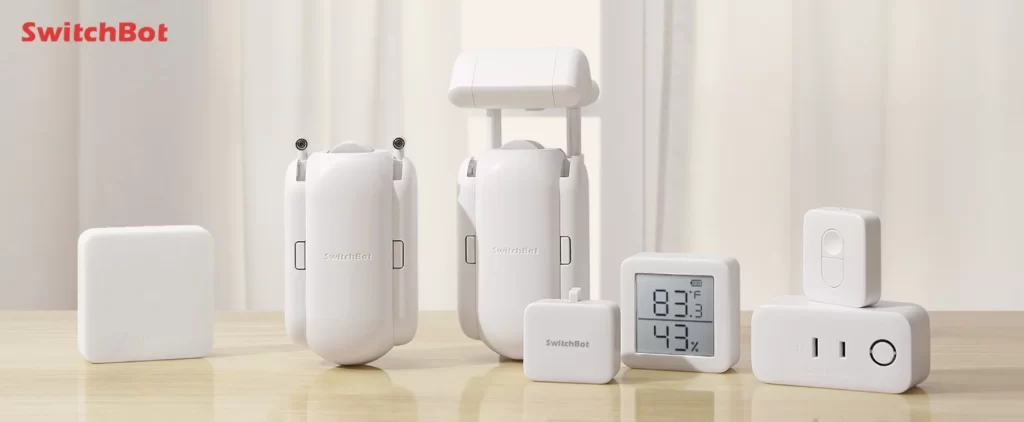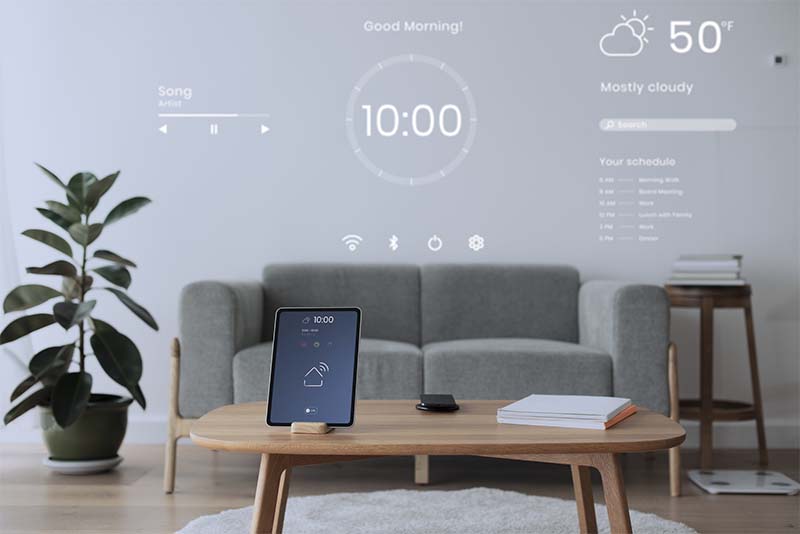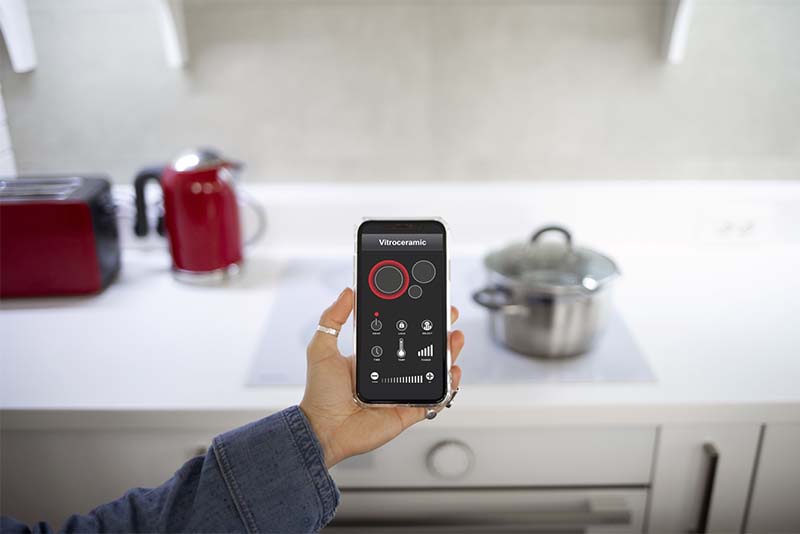The next step is to begin the Echo device setup process by opening the Alexa app on your tablet or smartphone. You can set up your Echo and personalize your Alexa experience here.
Locate the Alexa app icon on your device’s home screen or in the app drawer. The icon is typically a blue circle with a white speech bubble or smile on it. Tap the icon once to launch the app.
A welcome screen will appear when you launch the Alexa app for the first time. You might see prompts asking you to log in with your Alexa account if this is your first time setting up. If you don’t already have an Alexa account, create one using the same email address and password.
The app may request access to your location, contacts, and microphone after you’ve signed in. By granting these permissions, Alexa can offer you a better, more customized experience, like enabling calling features or providing you with accurate weather updates.
You will see the main dashboard of the app after logging in and granting permissions. You can view your connected devices, adjust settings, and learn more about Alexa’s capabilities here. Tap the “Devices” icon in the lower right corner of the screen to add your new Echo.
To add a new device, tap the “+” icon in the top right corner of the Devices section. After selecting “Add Device,” select “Alexa Echo,” and then select the model of your Echo from the list. After that, the app will walk you through setting up your Echo to connect to your Wi-Fi network.
Throughout this process, keep your Echo plugged in and nearby. The app will detect the Echo’s orange light ring, indicating it’s in setup mode.
Opening the Alexa app is the gateway to controlling your Echo smartly and conveniently. It allows you to customize settings, add music services, create routines, and much more.
Setting Up a New Device in the Alexa App
Setting up your new Echo device is simple once you have opened the Alexa app and logged in. In order to begin using Alexa’s features, this procedure connects your Echo to your Wi-Fi network and links it to your Alexa account.
To start, go to the Devices tab, which is situated in the lower right corner of the Alexa app’s main screen. To access the device management section, tap on it.
Look for the + (plus) icon in the Devices section; it’s typically located in the upper right corner of the screen. To add a new device, tap this icon. You will be prompted to choose the device type from a menu.
Click on Add Device. Select the Alexa Echo from the list of device categories. A list of Echo models will then appear in the app. Select your specific model, such as the Echo Dot, Echo Show, or Echo Plus. This guarantees that the app can offer setup instructions tailored to a particular model.
If you haven’t already, the app will then tell you to plug in your Echo device. Make sure the orange light ring on your Echo is on, which indicates that it is in setup mode and prepared to connect.
The app will now try to establish a Wi-Fi or Bluetooth connection with your Echo device. To join a temporary network broadcast by the Echo, it may ask you to access your phone’s Wi-Fi settings. This stage enables the application to interact with
Go back to the Alexa app once your phone has established a temporary connection with the Echo’s network. You will be prompted by the app to choose your home Wi-Fi network and input the password. This enables internet connectivity for your Echo.
The app will sync your account and preferences to complete the setup after your Echo establishes a Wi-Fi connection. You might be prompted to select your preferred language and device location.
After everything is set up, your Echo will say “hello” and turn off the orange light ring.
You can now use your Echo! The Alexa app allows you to further customize settings or begin using voice commands.
Selecting Your Echo Model in the Alexa App
Choosing the appropriate Echo model is a crucial step in configuring a new Echo device in the Alexa app. This guarantees that the app optimizes features specific to your device and gives the correct setup instructions.
You can add a new device by tapping the + (plus) icon after launching the Alexa app, logging in, and selecting the Devices tab. The app displays a number of Alexa device categories, including Echo, Fire TV, Ring, and more, when you select Add Device.
To continue, tap Alexa Echo. At this point, the app presents a thorough list of available Echo models. Popular devices like the original Echo, the Echo Dot (different generations), the Echo Show (screen sizes), the Echo Plus, and the Echo Studio are usually included in this list.
Take a moment to determine the precise model of your Echo. The model name is typically printed on a label on the device’s bottom or on the box. Confusion can be avoided by being aware of the generation or version, particularly if you own several Echo devices.
Tap the name of your model in the list to select it. Every Echo device has unique hardware features, including speakers, microphones, screens, and smart home hubs, so picking the right model is important. The setup procedure is adjusted appropriately by the Alexa app. For instance, extra on-screen setup procedures are needed for Echo Show devices with screens.
BecauseAlexa regularly adds support for new devices, make sure your app is up to date if your exact model isn’t listed. The app might offer general setup instructions if your device is very outdated or unsupported.
The app will walk you through the next steps, including plugging in the device, connecting to Wi-Fi, and adjusting settings, after you’ve chosen your Echo model.
Choosing the correct Echo model guarantees a seamless setup and enables Alexa to access all of your device’s features.
Connecting Your Alexa Echo to Wi-Fi
Connecting your Echo to your home Wi-Fi network is a crucial next step after choosing your Echo model in the Alexa app and making sure the device is turned on (the orange light ring indicates setup mode). Your Echo can access the internet and react to voice commands thanks to this connection.
After choosing your device model in the Alexa app, you will be asked to establish a Wi-Fi connection. To connect to the Echo’s setup network, the app might advise you to temporarily change your phone’s Wi-Fi settings. During setup, the Echo itself establishes this temporary network to enable direct communication with your phone.
Look for a network called “Alexa-XXX” or “Echo-XXX” in the Wi-Fi settings on your phone. Choose this network and establish a connection. If internet access is not available through the connection, don’t worry; this is typical during setup.
Go back to the Alexa app, and a list of your home’s Wi-Fi networks will appear. From this list, pick your standard home Wi-Fi network.
Next, carefully enter your Wi-Fi password. Remember that Wi-Fi passwords are case-sensitive, so make sure that no capital or lowercase letters, numbers, or symbols are included. After entering, select Next or Connect.
At this point, your Echo will try to connect to your wireless network. It could take a minute to complete this process. The Echo’s light ring may flash orange or blue during this period.
The Echo will finish the setup process by syncing with your Alexa account after the Alexa app verifies that the connection was successful.
The app will offer troubleshooting instructions in the event that the connection fails. Incorrect passwords, poor Wi-Fi signals, and network limitations are typical problems. If the signal is weak, try moving the Echo closer to your router.
The Echo will greet you audibly and stop its orange light ring once it is connected. You can now use your Echo!
Waiting for Connection: What to Expect After Connecting Your Echo to Wi-Fi
Your Echo device starts the process of connecting to your home network as soon as you input your Wi-Fi password in the Alexa app and select “Connect.” Because it enables your Echo to interact with Alexa’s servers, download required updates, and react to voice commands, this step is essential.
As soon as the connection process starts, the Echo’s light ring display will change. The ring will typically flash orange when the device is in setup mode and blue when it is processing. During this time, your Echo is trying to establish a dependable connection to your Wi-Fi network.
This stage could take a few seconds to several minutes, depending on your router’s performance, network speed, and Wi-Fi signal strength. Have patience because this process may be interrupted by moving the device or unplugging it, which could lead to setup errors or delays.
The Alexa app will show status updates and keep an eye on the connection. Notifications like “Connecting to Wi-Fi,” “Verifying network,” or “Finalizing setup” may appear. These messages show that the Echo is successfully connecting to Alexa’s cloud services and your router.
The app will quickly verify the connection if your Wi-Fi signal is strong and your password is correct. After the light ring on your Echo changes from orange to off or briefly turns blue, the device may say “Hello, your Echo is ready” to welcome you.
The app will notify you and provide troubleshooting instructions if the connection fails. Incorrect Wi-Fi credentials, network congestion, or compatibility issues are typical problems. The app might advise resetting your router, bringing your Echo closer to it, or verifying your Wi-Fi password.
Your Echo is prepared to communicate with Alexa and carry out a variety of tasks once connected. Even though it can be unsettling, waiting is an essential step in making sure your device works properly.
Testing Alexa: Ensuring Your Echo Works Perfectly
It’s a good idea to test Alexa to ensure everything is working correctly after you’ve successfully set up your Alexa Echo and connected it to Wi-Fi. This guarantees that your Echo is prepared to help you and that your device will react appropriately to voice commands.
First, confirm that your Echo device is turned on and plugged in. When it is in a ready state, the light ring should be either off or softly glowing. To ensure that the device can clearly hear your voice, stand or sit a few feet away.
Say “Alexa” as the wake word to start. When Alexa is listening, you should see the light ring light up, which is typically blue. Try talking clearly or getting closer to the device if the Echo does not respond or the light does not turn on.
Give Alexa a straightforward command, such as “What time is it?” or “What’s the weather like today?” once she has started listening. Alexa should give the requested information in a spoken response. This verifies that the internet connection and microphone are operational.
Additionally, you can test simple commands like “Alexa, play some music” or “control some smart home devices if you have any connected.” The setup was successful if Alexa reacts as expected.
Try saying, “Alexa, increase the volume,” or manually pressing the volume buttons if Alexa is unresponsive or miscommunicative. Make sure there is little background noise and that your Echo is in a peaceful setting.
Try the “Alexa, what can you do?” command as well. To help you become acquainted with the features that are available, Alexa will provide a list of the most popular features.
Check your Wi-Fi connection or restart the Echo by unplugging and re-plugging it if you experience problems. Verify that your Echo is linked to the appropriate Alexa account and that your Alexa app is up to date.
You can be sure that your device is prepared to assist with everyday tasks, entertainment, and smart home control by testing Alexa after setup.
Changing the settings on your Echo after it has been configured and tested allows you to personalize Alexa to your tastes and increases the device’s usefulness. In roughly 350 words, here’s how to improve your Echo:
To begin, tap Devices (bottom right) in the Alexa app, then choose your Echo under Echo & Alexa. Tap Settings (gear icon) at the top. Verify your device’s name and location first. When you have several devices, it helps to name each Echo, such as “Kitchen Echo” or “Bedroom Echo.” Location-based features, such as traffic, weather, and local news updates, are made possible by entering your accurate physical address.
To change the volume of your device’s alarms, timers, and notifications separately from the main speaker volume, scroll to Sounds. Notification sounds, alarm tones, and even the wake-word sound feedback can all be changed. Turn on or off calendar, reminder, Alexa shopping, and smart home event alerts under Notifications.
Connect your favorite streaming services under Music & Podcasts. Select Spotify, Apple Music, Alexa Music Unlimited, or another service by tapping Link New Service, and then log in. To say “Alexa, play jazz” without naming the service, you can set a default service. If you want to call friends who have Alexa, go to Communications and turn on Voice Calling and Messaging. For brief chats between your Echo devices, you can also configure Drop-In.
Examine Language, Time Zone, and Measurement Units (Imperial or Metric) under Preferences. To make Alexa whisper back when you speak softly, you can activate Whisper Mode and change the voice to either the original or a second voice. Turn on VoiceView screen reader features or Closed Captions for Echo Show screens under Accessibility.
Remember Routines: To create automated sequences that are triggered by voice commands, schedules, sensor detection, or location, tap More (bottom right) → Routines. For instance, when you say “Alexa, good morning,” a “Good Morning” routine can start the news, turn on lights, and announce the weather.
Finally, go over your privacy settings. You can manage voice recordings, choose to have them deleted automatically, and examine your voice history under Alexa Privacy. Notifications are silenced during designated hours when Do Not Disturb is enabled.
By exploring and adjusting these settings, your Alexa Echo becomes a personalized, context-aware assistant that fits seamlessly into your daily life.







